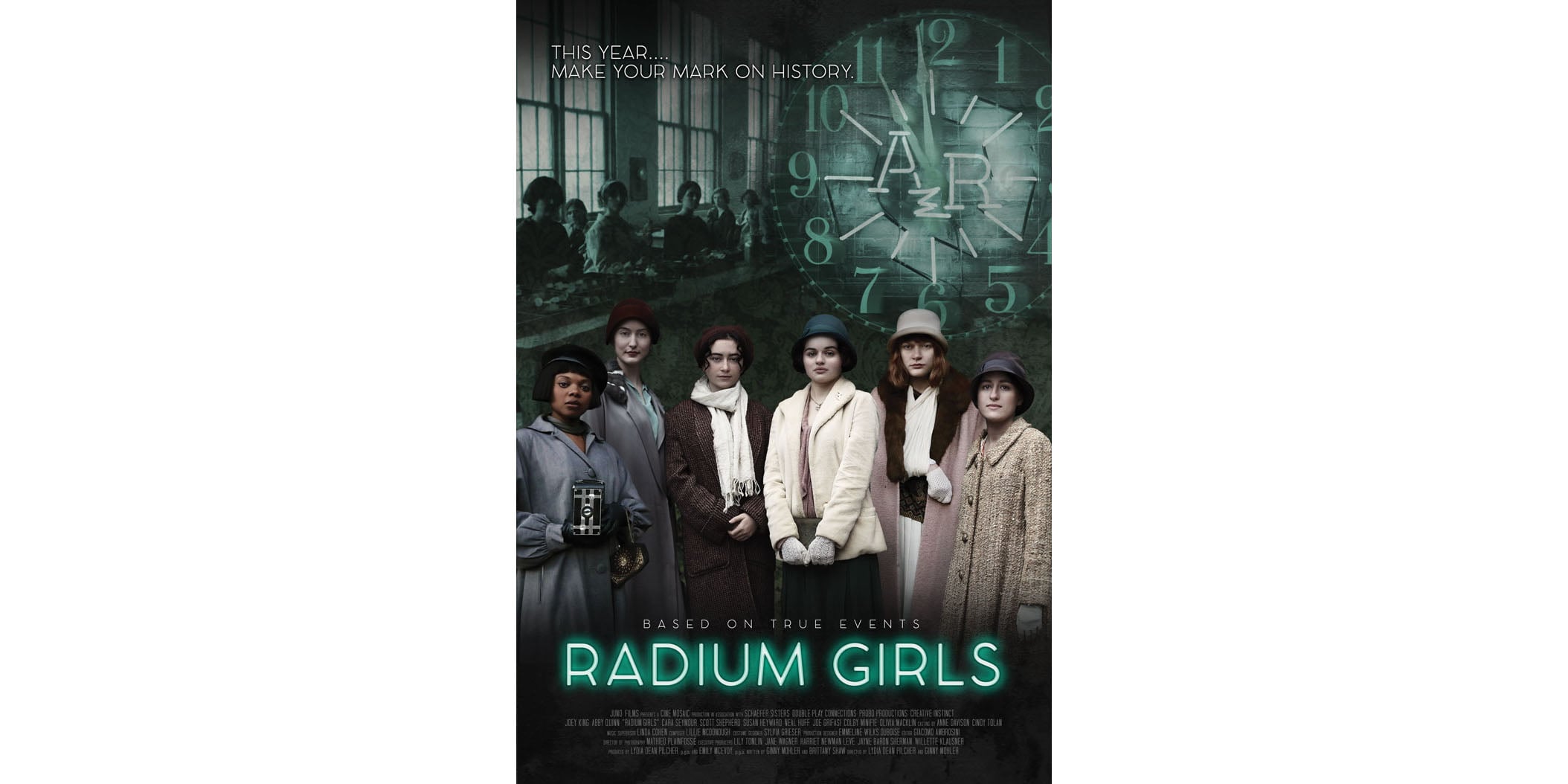‘Radium Girls,’ The True Story Of Poisoned Factory Workers Who Fought Back

“Radium Girls” is out now at the Landmark Midtown Art Cinema until Nov. 12.
Juno Films, Inc.
Like many things originally thought beneficial, radium proved deadly. In the 1920s, hundreds of young women working in factories were exposed to so much of the chemical element that their gravesites can still set off Geiger counters.
“City Lights” host Lois Reitzes spoke with Atlanta native, filmmaker and director Lydia Dean Pilcher about her new film, “Radium Girls.” It focuses on the story of two sisters, Bessie (played by Joey King) and Jo Cavallo (played by Abby Quinn), who work at the American Radium Factory. The factory manufactured glow-in-the-dark watch dials that used radium to make them luminous.
The women would dip their brushes into radium, lick the tip of the brushes to give them a precise point, and paint the numbers onto the dial. That direct contact and exposure led to many women dying from radium poisoning.
The film is based on true events of how a group of women discovered that their employers were deliberately withholding information about the dangers of the element.
It’s currently showing at the Landmark Midtown Art Cinema through Nov. 12 and it will be available for streaming later this year.
Interview Highlights:
The true story behind the “American Radium” factory court case:
“The real company was ‘U.S. Radium,’ and we changed the name slightly. The whole story is a true story and the court case that the girls ultimately mounted against the company is a notorious case that is still used today in arguing cases of toxic chemical litigation.”
Why the company’s doctor diagnosed the sick women with syphilis:
“As said in the film, syphilis is a diagnosis that not many would want to talk about, and that is actually how the radium poisoning was proven. In real life, there were two sisters who had a third older sister who had died reportedly of syphilis. And when the girls came to meet Catherine Riley, who was head of the National Consumers League in New Jersey, she suggested that the only real way to prove that radium poisoning was happening was to exhume a body and the girls were very disturbed by this idea.
“When they get home that night, they decide that it’s ultimately something that they have to do. Indeed it did prove that there was no syphilis, she died of radium poisoning.”
The significance of “The Radium Girls” being released in 2020:
“When we were making the movie, we were thinking of events such as the Water Crisis in Flint, Michigan, or the way people talk about holding a cell phone up to your brain for hours on end.
“I would say in the COVID crisis, there’s so many parallels, it’s really haunting. You think of COVID and radium as elements we don’t know everything about or they didn’t know everything about radium at the time. We’re still learning about COVID. You think about the way science is being denied and governments are turning away from the idea of people suffering, falling sick and dying. Asking the question ‘Is it safe to go back to work?’ Economies are being collapsed.
“All of those issues are really turning into something that really requires a major collective force to stand up to. So I think Radium Girls were really whistleblowers of their time.”





